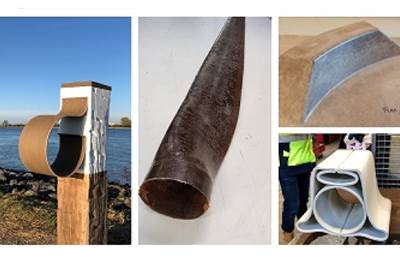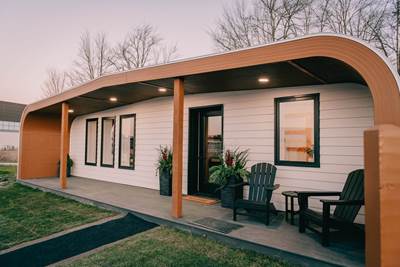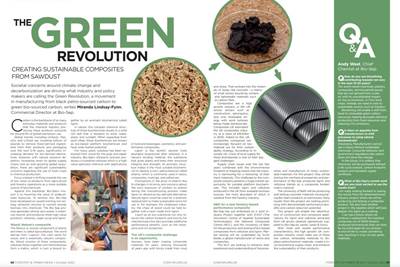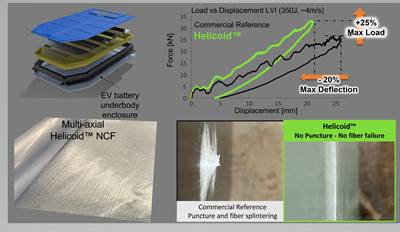Biomaterials
National Composites Centre participates in Horizon Europe GREEN-LOOP project
Research-intensive 17-partner innovation project will develop new sustainable and circular strategies with novel bio-based products using rubber, bioplastics and wood composites.
Read MoreSuper Formula, Bcomp announce sustainable fiber composite bodywork
Japan’s premiere single-seater race series confirms hybrid composite parts for SF23 chassis as part of Next 50 plan.
WatchSeaBioComp project develops biocomposite demonstrator products for marine applications
Prototype products explore thermoplastic polymers, natural fibers and 3D printing technologies to effectively reduce the use of fossil-based materials in the marine sector.
Read MoreThermoset-thermoplastic joining, natural fibers enable sustainability-focused brake cover
Award-winning motorcycle brake disc cover showcases potential for KTM Technologies’ Conexus joining technology and flax fiber composites.
WatchUniversity of Maine unveils 100% bio-based 3D-printed home
BioHome3D, made of wood fibers and bioresins and entirely 3D printed, highlights Maine’s effort to address the need for more affordable housing.
Read MoreBio-Sep propels sustainable composites development via forestry-produced biochemicals
Joint industry project with iCAST, NCC and University of Bath to produce and test bio-based composites from cellulose and lignin sawdust, replace fossil-derived ingredients.
Read MoreHelicoid Industries releases three use cases of Helicoid technology
Use case applications with Helicoid technology implementation demonstrated mechanical performance improvements, such as impact resistance and strength.
Read MoreGrand Largue Composites, Sicomin enable flax fiber-built Class40 racing yacht
Fibers, fabrics, epoxy resins and adhesives from Sicomin helped realize the lightweight, strong and stiff Crosscall yacht, capable of tackling extreme ocean racing conditions.
Read MoreKTM Technologies motorsport component earns SPE Automotive Award
Brake disc protection comprises a balance of flax fibers and bio-based polyamides for almost 70% savings in CO2, improved recycling properties.
Read MoreDrawing design cues from nature: Designing for biomimetic composites, Part 1
Biomimicry is an interdisciplinary methodology that can inform composites design and manufacturing via use of more effective and sustainable materials, structural fabrication and technological practices.
Read More


















